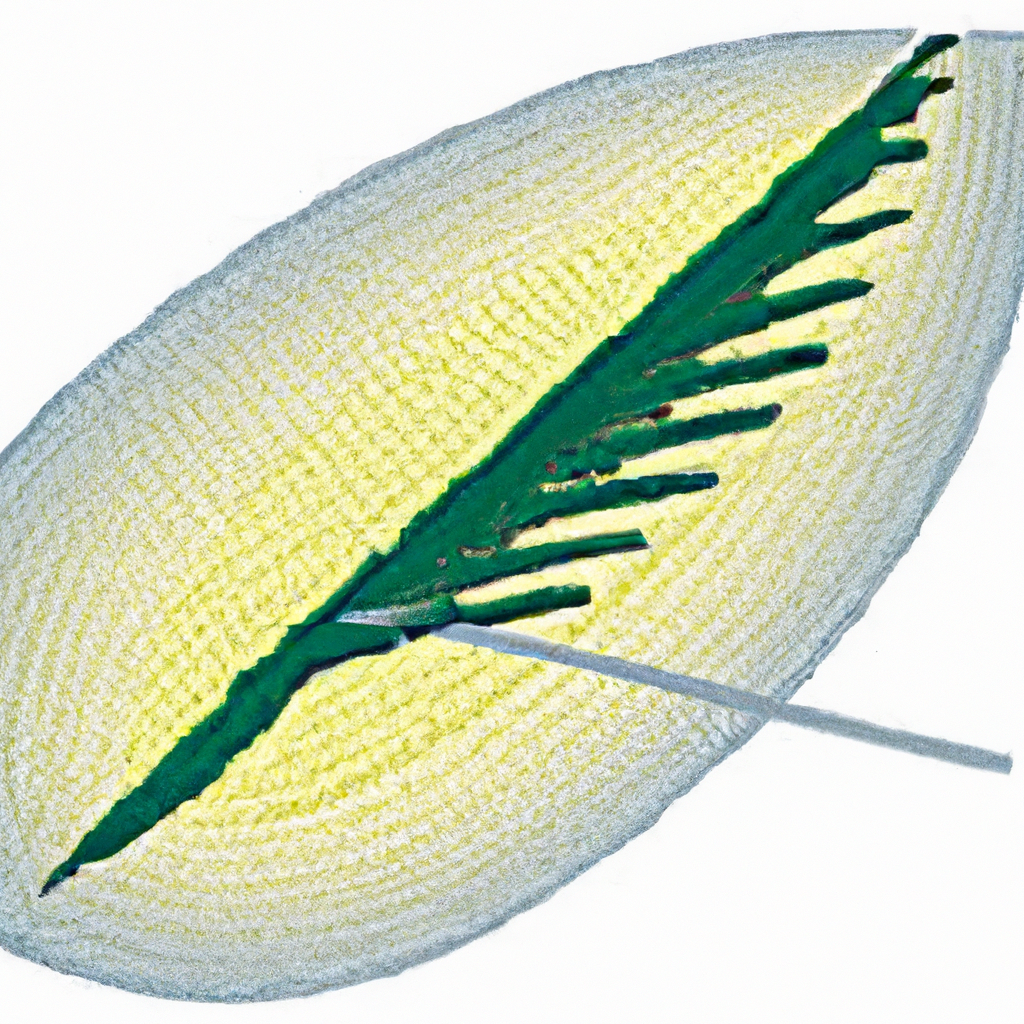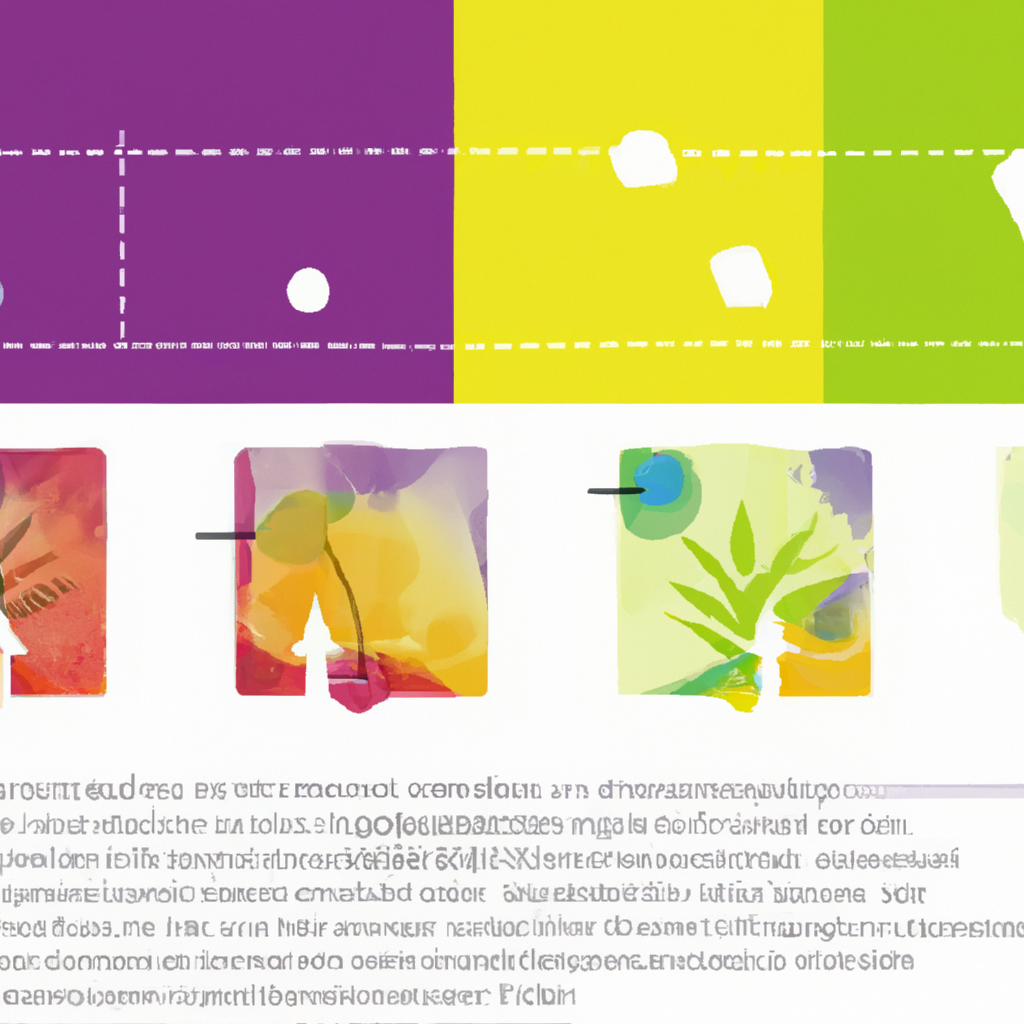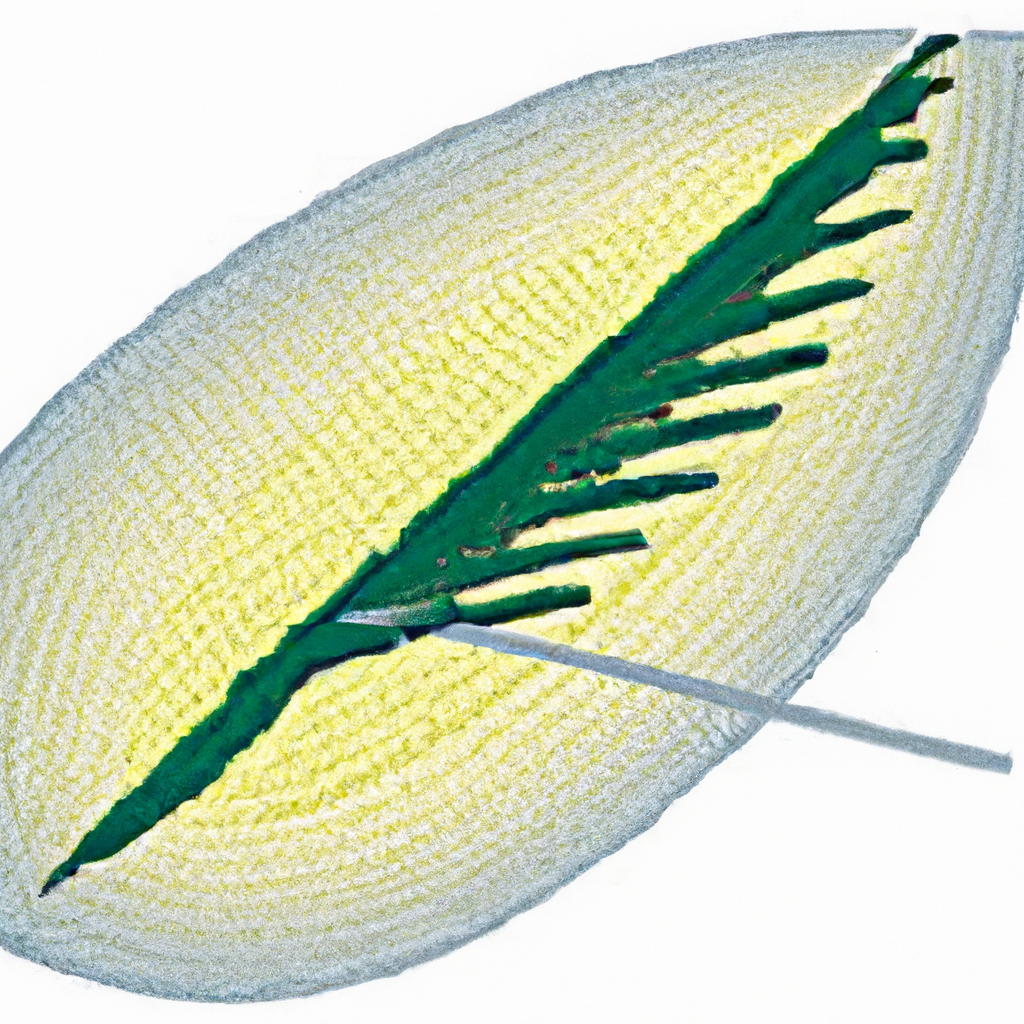Have you ever wondered why seed cover plays a crucial role in the germination and growth of plants? The significance of seed cover goes beyond its mere protective function; it serves as a vital source of nourishment and protection for the seed. This article explores the remarkable ways in which a well-developed seed cover enhances germination and promotes robust plant growth. Discover how this often-overlooked aspect of seed biology can have a profound impact on the success of your gardening endeavors.

Factors Affecting Seed Germination
Temperature
Temperature plays a crucial role in seed germination. Each plant species has an optimal temperature range for germination, and this can vary widely. Generally, most seeds germinate best within a specific temperature range, often between 65 to 85 degrees Fahrenheit (18 to 29 degrees Celsius). Temperature affects the metabolic processes within the seed, influencing the activation of enzymes and the speed at which the seed absorbs water. It is important to provide the right temperature conditions to ensure successful seed germination.
Moisture
Moisture is another critical factor influencing seed germination. Adequate water content is essential for seeds to break dormancy and initiate the germination process. However, excessive moisture can cause seed rot or fungal infections. Seeds need a balance of moisture to absorb, swell, and activate cellular processes leading to germination. Proper moisture levels ensure that the seed remains hydrated without suffocating or drying out.
Light
While some seeds require light for germination, others are light-sensitive and need darkness to sprout. These light requirements vary depending on the plant species. Light can stimulate certain hormonal processes and signal to the seed that it is time to germinate. On the other hand, darkness can prevent premature germination or inhibit the growth of certain seeds. Understanding the light requirements of different seeds is essential to provide optimal conditions for germination.
Oxygen
Like all living organisms, seeds require oxygen for respiration. Oxygen is necessary for the breakdown of stored food reserves within the seed, providing the energy needed for germination. Adequate oxygen levels in the soil or growing medium allow for proper root development and the formation of seedlings. Poor oxygen availability can result in seed suffocation or the development of anaerobic conditions, which inhibit germination. Proper aeration and oxygenation of the growing medium are important for successful seed germination.
Role of Seed Cover in Germination
Protection from External Factors
Seed covers, also known as seed coats or testa, serve as a protective layer around the seed. They safeguard the delicate embryo from mechanical damage, pathogens, and other external factors. Without a seed cover, the vulnerable embryo would be at risk of injury and infection, making germination and subsequent growth difficult. The seed cover acts as armor, shielding the seed from harm and ensuring its safe passage into the world.
Regulation of Moisture Levels
The seed cover plays a crucial role in regulating the moisture levels surrounding the embryo. It acts as a barrier, preventing excess water from entering the seed and causing damage. At the same time, the seed coat allows for the gradual uptake of water, ensuring that the seed remains sufficiently hydrated to initiate germination. This regulation of moisture levels is essential for the proper functioning of the seed and the successful germination process.
Facilitation of Gas Exchange
During germination, the seed requires an exchange of gases to support metabolic processes. The seed cover allows for the intake of oxygen and the release of carbon dioxide produced by the growing embryo. This exchange of gases is crucial for respiration and energy production within the seed. Without proper gas exchange facilitated by the seed coat, the embryo would be deprived of oxygen and might not be able to respire effectively, impeding germination.
Light Exposure Control
Depending on the species, some seeds require specific light conditions for successful germination. The seed cover can control the exposure of the embryo to light, either by allowing light to penetrate or by blocking its entry. This ensures that the seeds receive the appropriate light signal necessary for germination. Light exposure control provided by the seed coat ensures that seeds germinate under optimal conditions, allowing them to grow and thrive.
Types of Seed Covers
Natural Seed Covers
Natural seed covers are those that naturally occur in plants. They are made up of various materials, such as cellulose, lignin, and proteins, which provide strength and protection. These seed covers can have diverse textures, colors, and patterns, often reflecting the specific characteristics of the plant species. Natural seed covers develop as part of the plant’s reproductive process, enclosing the seed and preparing it for dispersal.
Artificial Seed Covers
Artificial seed covers are those added or modified by humans. These can include coatings or treatments applied to the seed to enhance its protection and germination. Artificial seed covers are often used in commercial seed production to improve seed quality and increase germination rates. Coatings may include substances like polymers or clay, which provide a protective layer and help retain moisture. Artificial seed covers are particularly useful in controlled environments where precise germination conditions can be maintained.
Importance of Natural Seed Covers
Seed Dispersal Mechanisms
Natural seed covers are essential for the dispersal of seeds, allowing plants to colonize new areas and ensure their survival. Different types of seed covers have evolved to facilitate dispersal through various means, such as wind, water, animals, or self-propulsion. These covers protect the seed during transport, preventing damage and offering a higher chance of successful establishment in new habitats.
Adaptation to Specific Environments
Natural seed covers play a role in the adaptation of plants to specific environments. Seeds are equipped with covers that enhance their chances of survival in various conditions. For example, some seeds have thick, impermeable seed coats that protect them from extreme temperatures, drought, or exposure to chemicals. Others have specialized structures or appendages that aid in dispersal, such as hooks, wings, or water buoyancy adaptations. Natural seed covers ensure that seeds are well-suited to their respective habitats, increasing their chances of successful germination and growth.
Nutrient Supply and Protection
Seed covers also provide a small store of nutrients that supports the initial growth of the embryo. These nutrients, often stored in the endosperm or cotyledons, can sustain the seedling until it establishes a functional root system and can draw nutrients from the soil. The seed cover acts as a barrier, protecting these valuable nutrient stores from pathogens, predators, or unfavorable environmental conditions. Natural seed covers ensure the provision and protection of vital nutrients, allowing for healthy seedling development.

Importance of Artificial Seed Covers
Controlled Germination Environment
Artificial seed covers enable the creation of controlled germination environments that optimize conditions for seed germination. Through the use of coatings or treatments, seed producers can enhance moisture retention, regulate temperature, and provide a protective barrier against pathogens or pests. These artificial seed covers ensure consistent germination rates and enable precision in seed production, particularly in challenging or variable environmental conditions.
Protection from Pests and Diseases
Artificial seed covers can act as a physical barrier, protecting seeds from pests and diseases. Coatings or treatments enriched with insecticides or fungicides can reduce the risk of seed damage or infection. By applying these artificial seed covers, producers enhance the chances of both germination success and healthy seedling establishment, safeguarding the seeds from potential threats.
Improved Seedling Vigor
Artificial seed covers can improve seedling vigor by providing additional nutrients or growth-promoting substances. Coatings enriched with beneficial microorganisms, hormones, or organic matter can stimulate early seedling growth and development. These artificial seed covers offer a supplementary boost to the seed’s resources, enhancing its vigor and resilience during the critical early stages of growth.
Enhancing Seed Germination with Seed Cover Techniques
Scarification
Scarification is a seed cover technique that involves intentionally breaking or thinning the seed coat to promote germination. This process can be achieved through physical methods like mechanical scratching or abrasion, chemical treatments, or natural methods such as exposure to extreme temperatures or microbial activity. Scarification helps to overcome hard or impermeable seed coverings, allowing water penetration and kick-starting the germination process.
Stratification
Stratification is a technique used to simulate the natural winter conditions that some seeds require for germination. This process involves subjecting the seeds to a period of cold, damp conditions, typically in a refrigerator or outdoor setting. Stratification helps to break seed dormancy and can be particularly beneficial for woody plants and certain perennial species. By mimicking the natural cold-winter period, stratification prepares the seeds for germination when warmer conditions occur.
Sowing Depth and Spacing
Proper sowing depth and spacing are vital for seed germination. Different seeds have varying requirements regarding sowing depth, influenced by factors such as seed size and light requirements. Seeds that require light for germination should be sown at a shallow depth, allowing them to receive the necessary light signal. Larger seeds, on the other hand, may require deeper burial for sufficient protection and moisture retention. Adequate spacing between seeds ensures proper airflow, light exposure, and resource allocation, preventing overcrowding and competition during germination.
Mulching
Mulching is a practice that involves covering the soil surface around seeds with organic or inorganic materials. Mulch helps regulate soil temperature, retain moisture, suppress weeds, and protect seedlings from the impact of rainfall or irrigation. The mulch cover mimics the seed coat’s protective function, preventing soil crusting and erosion, and creating a favorable microclimate for germination and early growth. Mulching can significantly enhance seed germination rates and contribute to overall plant health.

Promoting Plant Growth Through Seed Cover
Nutrient Availability
Seed covers contribute to nutrient availability for the developing seedling. Natural seed covers, such as endosperm or cotyledons, provide essential nutrients that sustain early growth. These nutrient stores allow the seedling to establish itself and develop the necessary photosynthetic structures. Artificial seed covers can also be formulated with nutrients, organic matter, or beneficial microorganisms that enhance nutrient availability and uptake by the young plant.
Weed Suppression
Seed covers, particularly mulches, can help suppress weed growth around emerging seedlings. By covering the soil surface, mulch prevents weed seeds from germinating and competes with emerging weeds for light, space, and nutrients. This reduces the competition for resources, allowing the young plants to establish themselves more effectively. In addition, mulching can help hinder weed seed dispersal and create a physical barrier that impedes weed growth, leading to healthier and more robust plant growth.
Temperature Regulation
Seed covers, whether natural or artificial, play a significant role in temperature regulation for seed germination and subsequent plant growth. Natural seed covers can insulate the seed, protecting it from extreme temperature fluctuations. They act as a thermal barrier, buffering the impact of cold or heat on the seedling. Similarly, artificial seed covers can be designed to modulate soil temperatures, creating an optimal growing environment. By regulating the temperature, seed covers help ensure that seeds germinate and grow under favorable conditions, promoting healthy plant development.
Water Conservation
Seed covers, particularly mulches, aid in water conservation by reducing evaporation from the soil surface. By creating a protective layer, these covers minimize moisture loss, conserve water resources, and provide a more stable soil environment for seed germination and growth. By retaining moisture around the seed and root zone, seed covers help ensure sufficient water availability, particularly in arid or drought-prone regions. This reduces water stress for the emerging seedlings and promotes their overall growth and survival.
Effects of Improper Seed Cover on Germination and Growth
Seed Suffocation
Inadequate gas exchange due to improper seed cover can lead to seed suffocation. Seeds need oxygen to support respiration and energy production during germination. If the seed cover is too thick or impermeable, it can hinder the exchange of gases, depriving the seed of oxygen and impeding germination. Insufficient gas exchange can lead to weak or stunted seedlings that struggle to establish themselves and grow properly.
Excessive Moisture Retention
Improper seed cover that retains excessive moisture can be detrimental to germination and subsequent growth. Seeds require a balanced amount of moisture to absorb, swell, and initiate cellular activity. If the seed cover does not allow for proper drainage or breathability, the seed may become waterlogged, leading to rot, fungal infections, or seed death. Proper moisture regulation is crucial to prevent drowning the seed and to provide optimal conditions for germination.
Low Light Exposure
Inadequate or excessive light exposure due to improper seed cover can obstruct proper germination and hinder subsequent growth. Some seeds require specific light conditions to trigger germination, while others may be sensitive to light and require darkness to sprout. If the seed cover does not allow for the correct light exposure, the seedlings may exhibit delayed germination or fail to emerge altogether. Proper light exposure control is essential to ensure that seeds receive the necessary signal to initiate growth.
Competition from Weeds
Insufficient seed cover or a lack of mulching can result in increased competition from weeds. Without a protective layer or sufficient spacing, weed seeds can germinate and establish themselves alongside or even smother the emerging seedlings. Intense competition for resources such as light, water, and nutrients can negatively affect the growth and survival of the desired plants. Proper seed cover techniques and weed management strategies are crucial to minimize competition from weeds and support the successful growth of desired plants.

Seed Cover and Ecological Sustainability
Conservation of Biodiversity
Seed cover plays a vital role in the conservation of biodiversity. Natural seed covers contribute to the dispersal and survival of various plant species, allowing them to colonize new areas and maintain genetic diversity. By protecting the seeds and providing favorable conditions for germination, seed covers ensure the continued existence and resilience of diverse plant populations. Conserving seed covers and understanding their importance is essential for preserving biodiversity and maintaining ecological balance.
Indigenous Seed Cover Knowledge
Indigenous communities often possess traditional knowledge about seed covers and their role in germination and plant growth. This knowledge has been passed down through generations and is deeply rooted in local ecosystems and cultural practices. Indigenous seed cover knowledge provides insights into which seed covers are effective for specific environments, the optimal timing for seed sowing, and traditional techniques to enhance germination success. Recognizing and respecting indigenous seed cover knowledge can contribute to sustainable agriculture, ecosystem restoration, and the preservation of cultural heritage.
Ecosystem Restoration
Seed cover techniques play a crucial role in ecosystem restoration efforts. In degraded or disturbed ecosystems, the introduction of suitable seed covers can aid in reestablishing vegetation and promoting ecological recovery. By providing protection, regulating moisture levels, and enhancing seedling vigor, seed covers contribute to the establishment of a diverse and resilient plant community. Seed cover techniques, coupled with appropriate site preparation and management, are essential for successful ecosystem restoration and the rehabilitation of degraded landscapes.
Practical Applications of Seed Cover Enhancement
Agricultural Practices
In agriculture, seed cover enhancement techniques are employed to optimize germination rates and improve crop yields. By using artificial seed covers, farmers can ensure uniform and consistent germination under controlled conditions. Coatings or treatments can enhance seed performance, protect against pests and diseases, and promote early seedling growth. Proper sowing depth, spacing, and mulching also contribute to successful crop establishment and growth. Incorporating seed cover enhancement practices into agricultural systems increases productivity, supports food security, and promotes sustainable farming practices.
Wildlife Habitat Restoration
Seed cover enhancement techniques play a crucial role in wildlife habitat restoration. Native plant species that provide valuable food and habitat for wildlife often depend on specific seed cover conditions for successful germination and establishment. Applying seed cover techniques, such as scarification or stratification, can increase the viability and germination rates of these plants. By creating suitable seed cover conditions and reintroducing native plant species, wildlife habitat restoration efforts can enhance biodiversity, support wildlife populations, and contribute to ecosystem health.
Urban Gardening Initiatives
In urban environments, seed cover enhancement techniques are valuable in promoting successful gardening and greening initiatives. Limited space, poor soil quality, and harsh urban conditions can pose challenges for plant growth. By incorporating artificial seed covers, such as coatings or mulches, urban gardeners can create optimal germination conditions and enhance plant establishment. These techniques help conserve moisture, protect against pests and diseases, and provide insulation against temperature extremes. Urban gardening initiatives that prioritize seed cover enhancement contribute to urban greening efforts, food production, and community engagement.
In conclusion, seed cover plays a critical role in enhancing seed germination and promoting plant growth. Factors such as temperature, moisture, light, and oxygen influence seed germination, while seed covers themselves provide protection, regulate moisture levels, facilitate gas exchange, and control light exposure. Natural seed covers are important for seed dispersal, adaptation to specific environments, and nutrient supply. Artificial seed covers offer controlled germination environments, protection from pests and diseases, and improved seedling vigor. Various techniques, such as scarification, stratification, sowing depth and spacing, and mulching, can enhance seed germination success. Seed cover techniques also promote nutrient availability, weed suppression, temperature regulation, and water conservation, promoting overall plant growth. Inappropriate seed cover can have adverse effects on germination and growth, such as suffocation, excessive moisture retention, low light exposure, and competition from weeds. Seed cover techniques contribute to ecological sustainability by conserving biodiversity, acknowledging indigenous seed cover knowledge, and aiding in ecosystem restoration. These techniques find practical applications in agricultural practices, wildlife habitat restoration, and urban gardening initiatives, fostering sustainable and resilient ecosystems. With a deeper understanding and application of seed cover enhancement, we can maximize germination success and promote healthy plant growth for a greener and more sustainable future.

